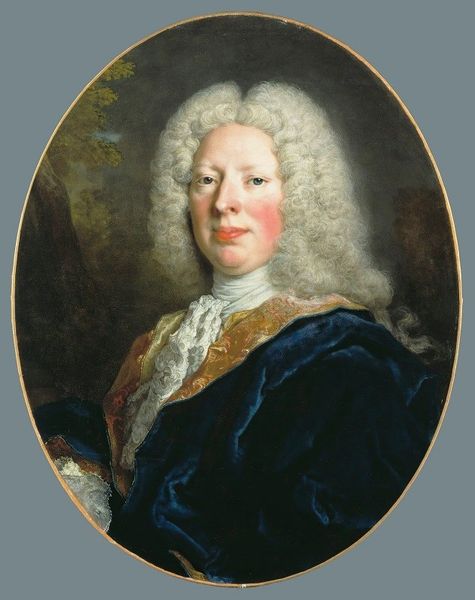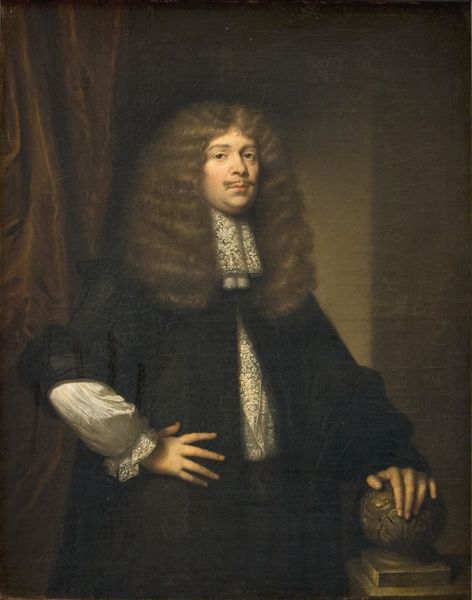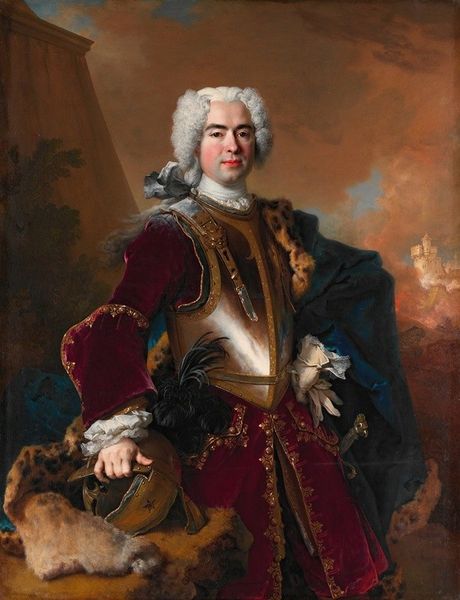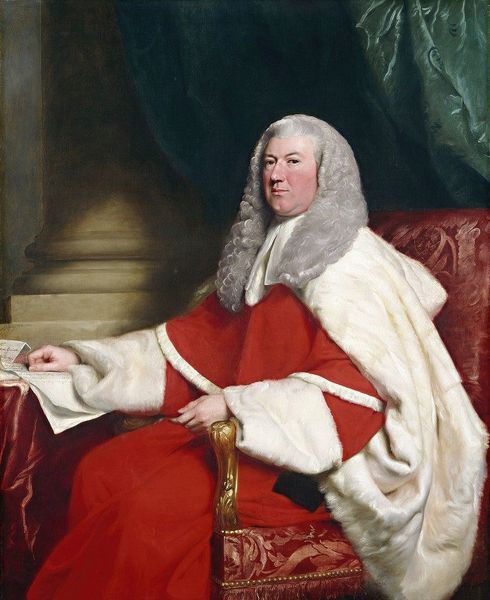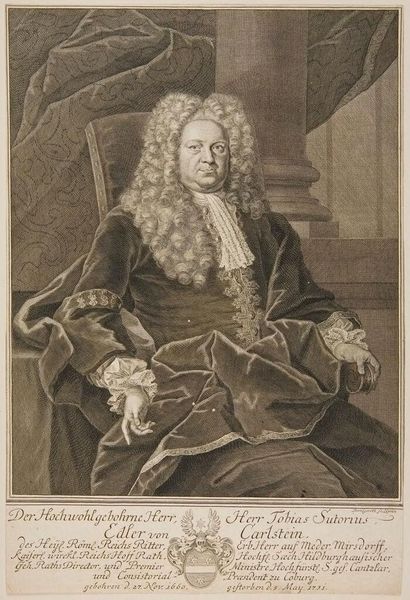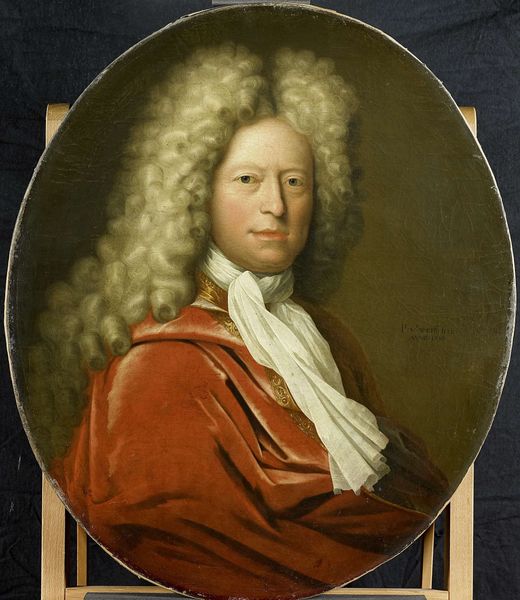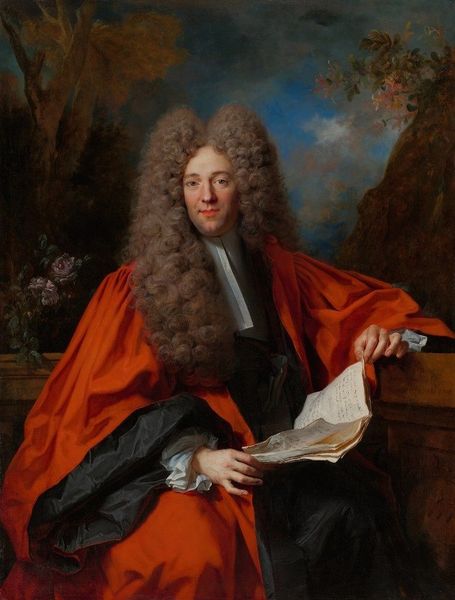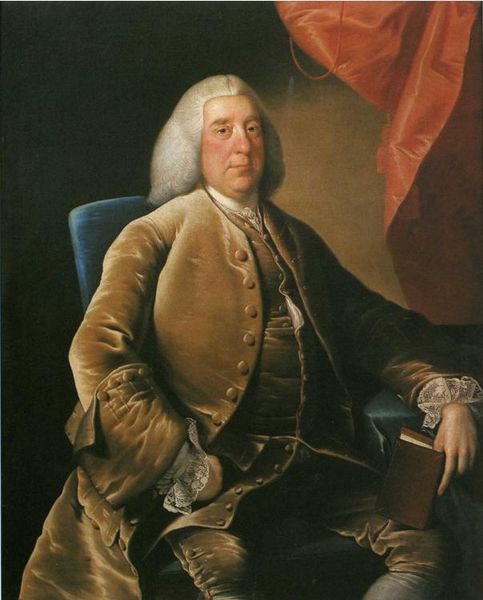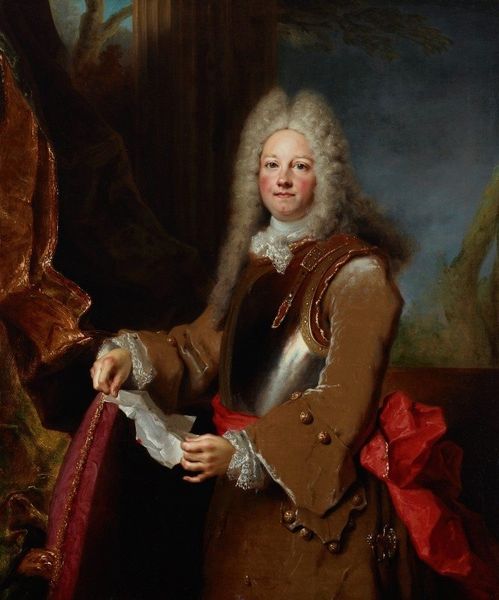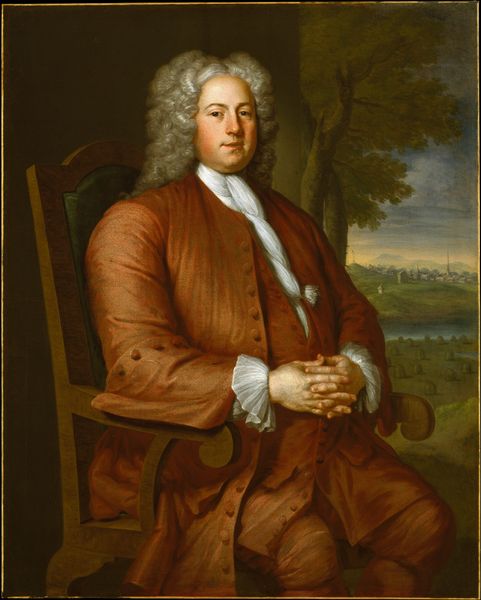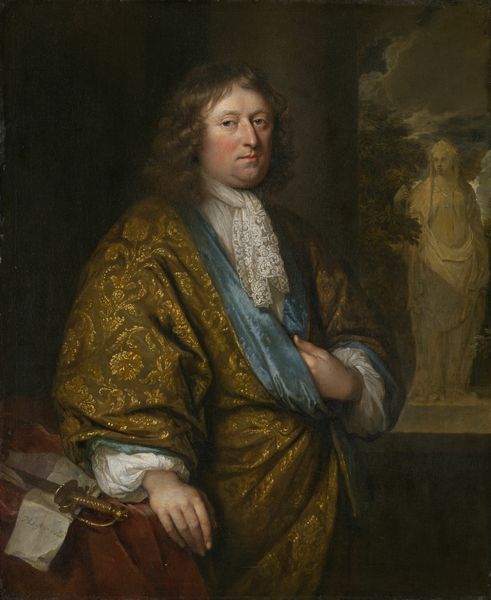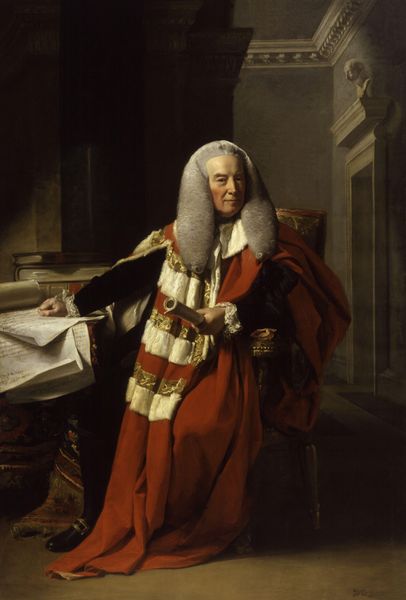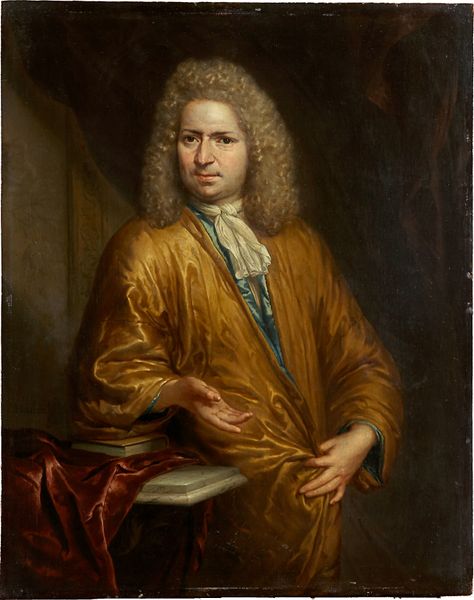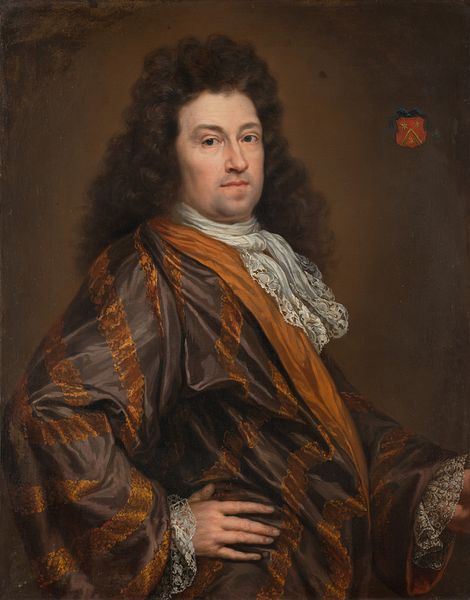
painting, oil-paint
#
portrait
#
baroque
#
painting
#
oil-paint
#
oil painting
#
history-painting
Copyright: Public Domain: Artvee
Curator: We're looking at Jean-François de Troy's "Portrait Of A Man," an oil painting that dates back to 1725, situated within the Baroque period. Editor: Wow, the texture! The robe looks like I could just reach out and feel that plush velvet. It's all swagger and power, isn't it? Like he’s holding court. Curator: Precisely. De Troy was quite sought after for his ability to convey status. We can analyze this image through a lens of class and gender performance, noticing the intentional display of wealth, power, and masculinity evident through his confident pose, expensive fabrics, and wig. How does the portrait speak to the gendered expectations of 18th-century European aristocracy? Editor: Oh, the wig. It’s like the bigger the hair, the closer to God… or at least, the king. Seriously though, beneath all that theatrical display, there's a surprisingly human gaze. Like he knows the wig is ridiculous, but he's gotta play the game. It's fascinating. Curator: Absolutely. The "game" is key, and understanding its rules at the time is essential. Think about the cultural norms around portraiture and social identity. This wasn't just about representation; it was about constructing and solidifying a specific type of authority and social standing. The portrait as a technology of power, if you will. Editor: A technology of power—I love that! It makes me think about how we "curate" ourselves online today, trying to project a certain image. Maybe we haven't come so far from this bewigged gentleman after all. But you know, looking at the overall composition, with that cool pillar in the background, the whole image looks very classical to me. Does that connect with the social message in some way? Curator: Without a doubt. The deliberate classical reference in the architectural elements aims to associate him with timeless virtues and erudition. It further cements the notion of privilege. It reinforces a lineage—both real and imagined. The man being portrayed wishes to embody a specific position of power, class, and social value that comes to existence due to similar referents, traditions, or historic meanings of value. Editor: Yeah, the more I look, the more I get this sense that every detail is there to reinforce his authority. Well, this was a powerful look at portraiture and persona. Curator: Agreed. By understanding both the artistic and social implications, the "Portrait of a Man" grants insight into a world of power, display, and social expectation from centuries past, still very current.
Comments
No comments
Be the first to comment and join the conversation on the ultimate creative platform.
